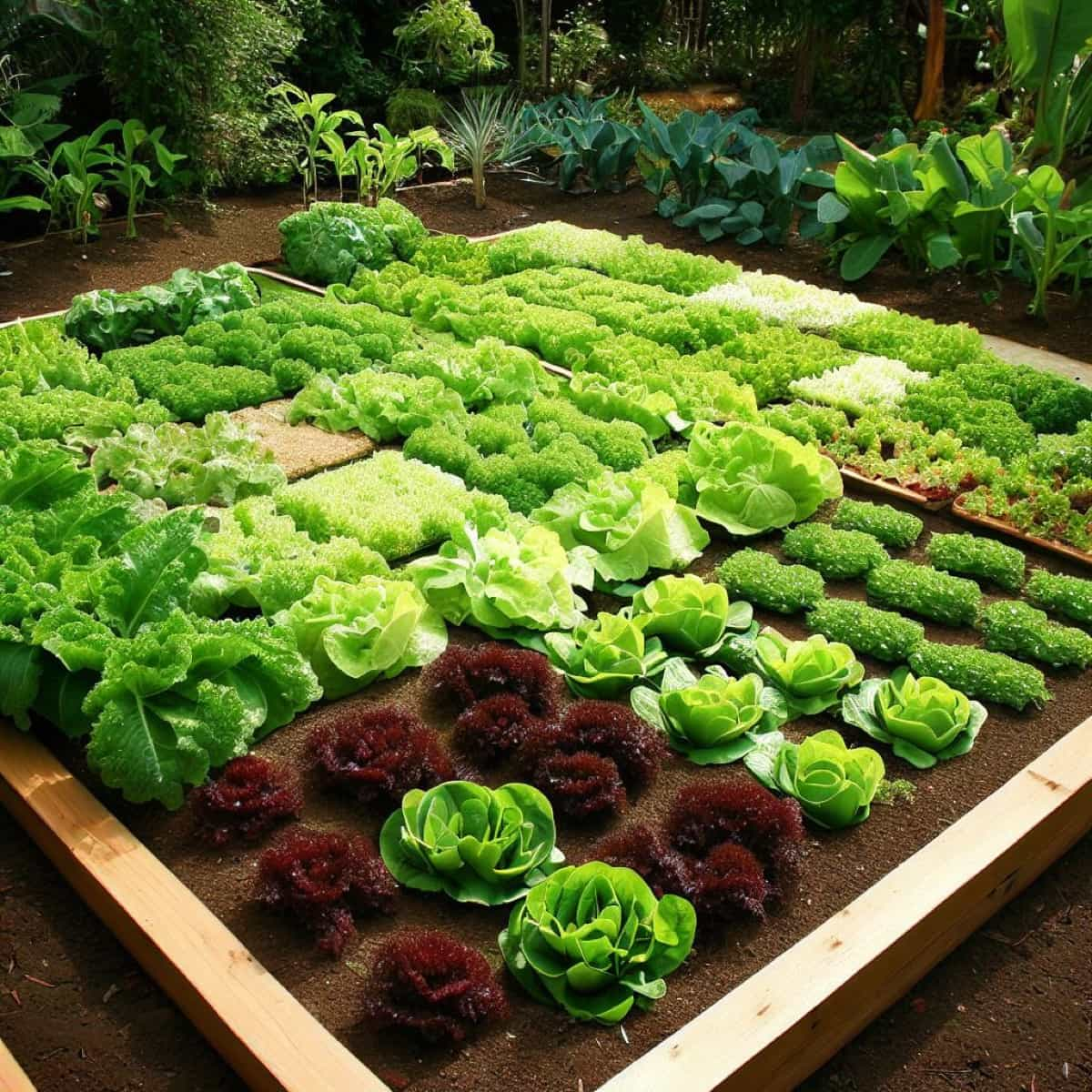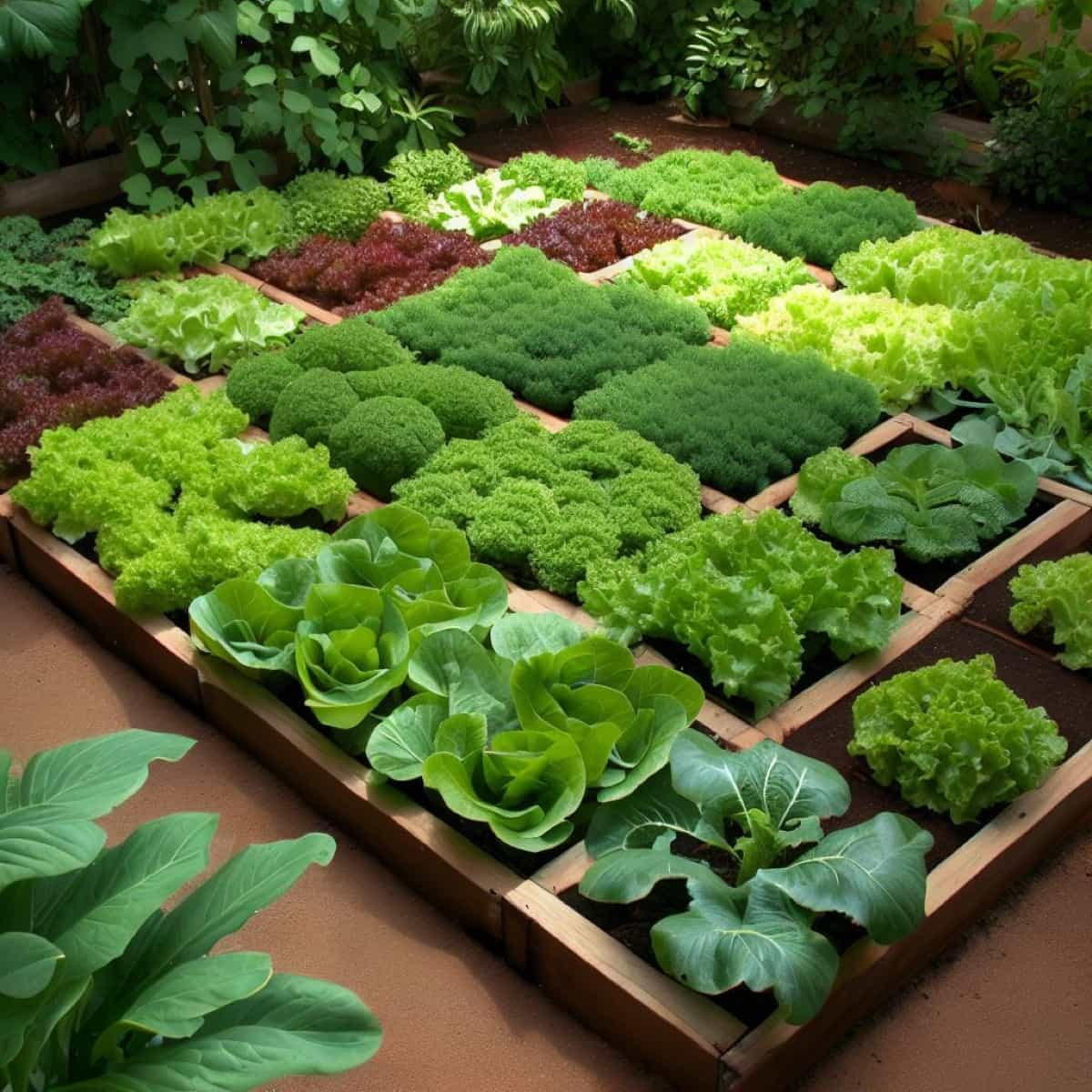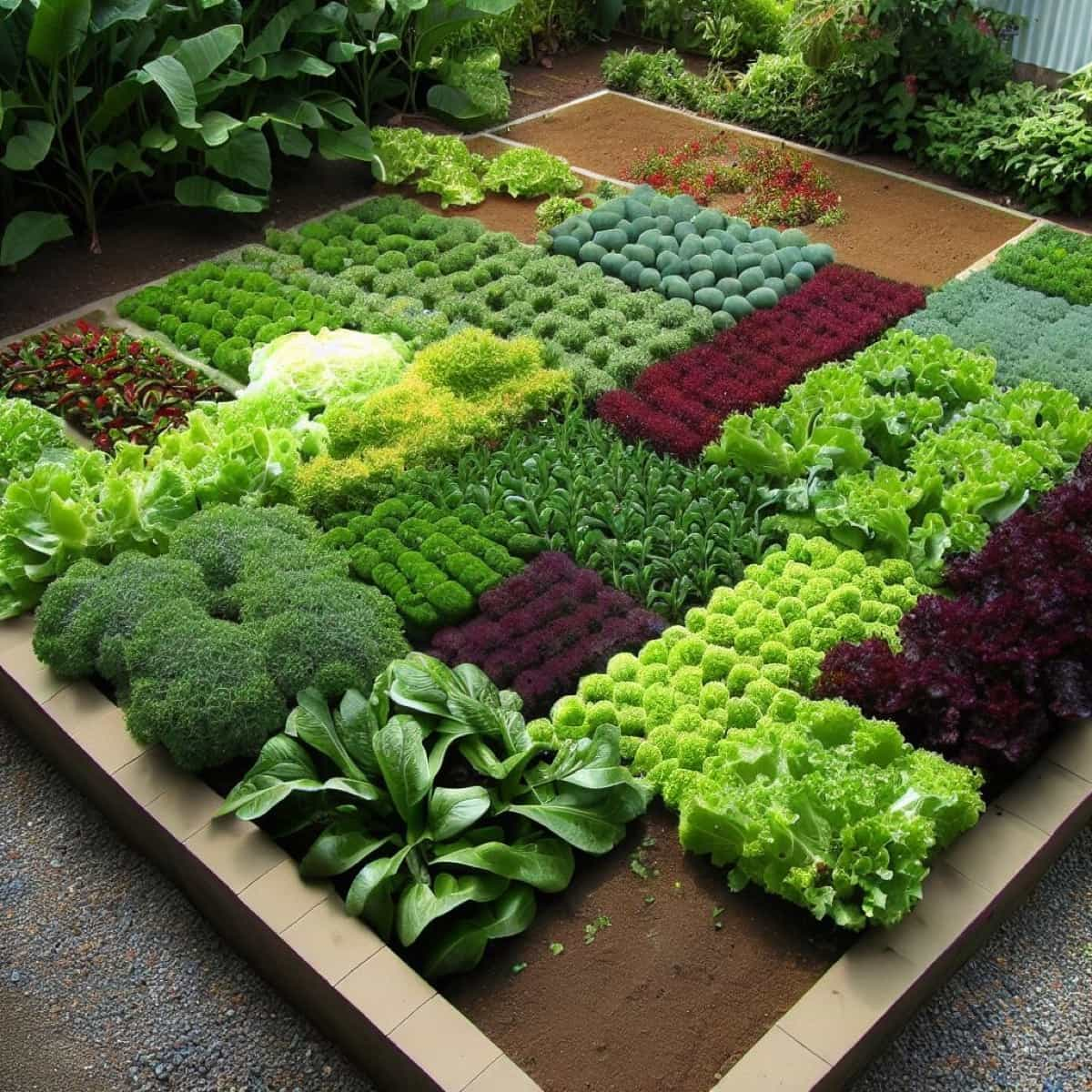When it comes to gardening, planning, and layout are crucial for optimizing yields. The concept of square-foot gardening offers an effective method for maximizing the production of vegetables, herbs, and flowers in a compact space. In square-foot gardening, raised beds are commonly used to subdivide the area into square-foot sections.

Understanding square foot garden spacing, knowing the number of plants per square foot chart, and utilizing a square foot gardening planner can help to efficiently use the space. So, what is the plant spacing for a square foot garden? What is the best spacing for a garden? And how many square feet is a 4×4 garden? All these questions can be answered by focusing on several aspects, such as optimal plant spacing, sunlight and shade consideration, soil quality, companion planting, succession planting, and garden layout and accessibility.
Optimal Square Foot Plant Spacing for Maximum Yields
Spacing your plants correctly can drastically improve their productivity. A well-thought-out plan that includes square-foot garden spacing can be a game-changer. Square foot gardening encourages you to think about the garden in terms of squares. Each square has a designated number of plants, often guided by plants per square foot chart.
This method minimizes the waste of space and resources. A typical 4×4 garden will have 16 square feet, allowing for various plants. A square-foot gardening planner can streamline this process, ensuring that each square foot is optimally utilized.
Consideration of Sunlight and Shade for Square Foot Garden Spacing
The amount of sunlight and shade that each plant needs varies. Your garden layout should factor this in for each square foot. Certain plants need lots of sunlight, while others do well with just some sun. When designing a square-foot garden layout, place plants that require similar light conditions together; this helps optimize growth and yield for each square. Take note of the sun’s path over your garden to make informed decisions. This will ensure that taller plants don’t cast shade over shorter ones, hindering their growth.
Soil Quality and Water Retention for Square Foot Garden Spacing
Good soil quality is crucial for any gardening method, and square-foot gardening is no exception. Fertile soil, rich in nutrients, is essential for optimal plant growth. Soil quality can affect water retention, a vital element for plant survival. A well-drained but moisture-retaining soil can make a significant difference in plant yield. In square-foot gardening, raised beds are often used, allowing for better soil quality control. Ensure you improve your soil by adding compost or organic material. This will make the soil better at holding water and allowing roots to grow.
In case you missed it: Square Foot Garden Spacing Chart: Vegetable Plants Per Square Foot

Companion Planting for Square Foot Garden Spacing
Each square can be used in square foot gardens to plant different types of plants, making companion planting a viable strategy. Companion planting involves placing plants together that benefit each other in some way. For instance, some plants can deter pests that would otherwise target their neighbors. Others may enrich the soil with nutrients that companion plants need. Using a square-foot gardening planner makes incorporating companion planting into your layout easy. This can help increase yields, reduce disease, and even improve flavors in some vegetable varieties.
Succession Planting for Square Foot Garden Spacing
Succession planting is another technique that works well with square-foot gardening. This involves planting a new crop in a square once the previous one has been harvested. Doing so gives you a continuous supply of fresh produce throughout the growing season. To implement this successfully, keep an eye on each plant’s growth cycle and harvesting time. Your square-foot gardening planner can assist in scheduling when each square is freed up for the next crop. This maximizes the usage of each square foot and can result in a more abundant harvest.
Garden Layout and Accessibility for Square Foot Garden Spacing
The final piece of the puzzle is to ensure your garden is easily accessible for planting, harvesting, and maintenance. A well-designed square-foot garden layout can make all these tasks easier. Square foot gardens usually consist of multiple 4×4 garden beds separated by walking paths.
This makes it simple to reach any plant without stepping on the soil and compacting it. Each 4×4 garden bed should ideally be accessible from all sides. By strategically planning your layout, you can make the most of each square foot, making your garden productive and aesthetically pleasing.
Crop Rotation for Square Foot Garden Spacing
Crop rotation is a time-honored practice that can seamlessly be integrated into square-foot gardening. In this technique, different crops are sequentially planted in specific squares, often annually or seasonally, to improve soil fertility and reduce disease risk. The concept behind crop rotation is simple: different plants use different nutrients and are susceptible to various diseases and pests.
In case you missed it: Everything You Need to Know About Pepper Plant Spacing

Changing what’s grown in each square gives the soil time to recover and break the cycle of disease and pests that can become established when the same plants are grown repeatedly in the same spot. Utilizing a square-foot gardening planner can simplify this complex task, allowing you to keep track of what was planted, where, and when, thus aiding in effective crop rotation.
Pest and Disease Management for Square Foot Garden Spacing
Pest and disease management is vital for the success of any garden, and the square-foot gardening method is no exception. The design of the garden itself, involving raised beds and specific spacing, can help reduce the risks of diseases and pests. Having plants together but not too close can limit the space available for weeds, which often host plants for pests. Companion planting can also be a natural deterrent for specific pests, keeping them away from more susceptible plants. Biological methods, such as introducing natural predators like ladybugs, can also be a part of your strategy.
Adjusting Spacing Based on Climate and Weather for Square Foot Garden Spacing
Climate and weather can significantly affect how plants grow, and your square-foot garden spacing may need adjustments. For example, plants might need more space in hot climates to ensure adequate airflow, reducing the risk of fungal diseases that thrive in humid conditions. On the other hand, cooler climates might benefit from closer spacing to reduce the time it takes for soil to warm up. Water availability, temperature fluctuations, and wind conditions are other variables that could warrant changes in your garden layout.
Square Foot Garden Spacing by Plant Type
| Plant Type | Plants Per Square Foot | Notes |
| Tomatoes | 1 | Requires staking or caging |
| Lettuce | 4 | It can be closely spaced |
| Carrots | 16 | Sow seeds directly |
| Peppers | 1 | Needs good airflow |
| Basil | 2 | Prone to fungal diseases, needs air circulation |
| Cucumbers | 2 | Train to climb vertically |
| Corn | 1 | Needs full sun |
| Zucchini | 1 | Requires a lot of space for sprawling |
| Spinach | 9 | Prefers cooler weather |
| Strawberries | 4 | Perennial can stay in place for years |
| Beets | 9 | Thin after sprouting |
| Onions | 9 | Can be planted from sets or seedlings |
| Radishes | 16 | Quick to mature |
| Beans | 9 | Can be bush-type or climbing |
| Peas | 8 | Need support for climbing |
| Cauliflower | 1 | Large plant needs space |
| Broccoli | 1 | Similar to cauliflower in spacing needs |
In case you missed it: All about California Giant Zinnia: How to Plant Seeds, Spacing, Size, Height and Blooming Time

Conclusion
Whether you’re a seasoned gardener or a beginner, integrating practices like crop rotation, pest and disease management, and climate-specific adjustments can drastically improve the productivity and health of your square-foot garden. Utilizing a square-foot gardening planner can be invaluable in managing these elements effectively. As you gain experience, you’ll better understand how these factors interact in your specific setting, enabling you to refine your approach for even better results continually.
- Feed Your Flock for Less: Top 10 Tips to Save on Chicken Feed
- Ultimate Guide to Ossabaw Island Hog: Breeding, Raising, Diet, and Care
- Hatching Answers: The Top 10 Reasons Your Chickens Aren’t Laying Eggs
- Eggs and Economics: Breaking Down the Cost of Raising Backyard Chickens
- Defend Your Greens: Proven Methods to Keep Iguanas Out of Your Garden
- Ultimate Guide to Cinnamon Queen Chicken: A Comprehensive Guide for Beginners
- Ultimate Guide to California Tan Chicken: Breeding, Raising, Diet, Egg-Production and Care
- Ultimate Guide to Marsh Daisy Chicken: Breeding, Raising, Diet, and Care
- 10 Types of Chicken Farming Businesses You Can Start for Profits